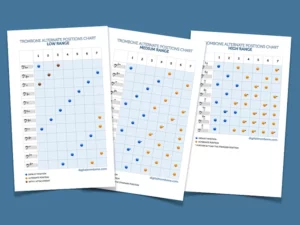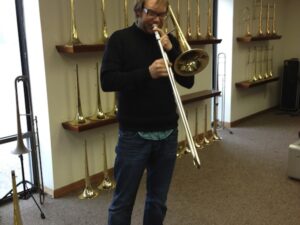
Scales Without Tonguing
One reason many jazz trombonists frequently use the higher range is because the notes are positioned closer together, allowing for greater agility. While it requires more chops to navigate up there, the reward is the ability to play melodic lines with lighter touch and more precision, thereby reducing some of the clumsiness that the trombone naturally struggles with in the lower range.
These scale exercises take this concept to the extreme. They are based on very alternate positions and are almost impossible to play in tune. Isn’t that great? 🙂
As you increase the speed, you can achieve the sound of a complete scale even while playing a glissando against the grain. This is not only beneficial for your chops but also helps building strength and expanding your high range.
Only use tongue on the first note in each exercise, and play the rest as natural legato.
Try them, and enjoy the sound of total lack of intonation in an extreme range! It’s as fun as it is challenging!
[nggallery id=4]
__________________________________________________________________________________
Did you like this exercise? Feel free to leave a comment or share it with your friends!
4 Comments
-
You need to get the spelling right on “tongueing”!
-
You got me… But it´s actually supposed to be tonguing. Don´t hesitate to correct me in the future!
-
There must still be the “e” after the “u”, to be correct in English. Sorry!
Arthur Moore -
I don´t like it, but you seem to be right! 🙂 Better change it again since it´s a part of the link name.
Thanks Arthur





